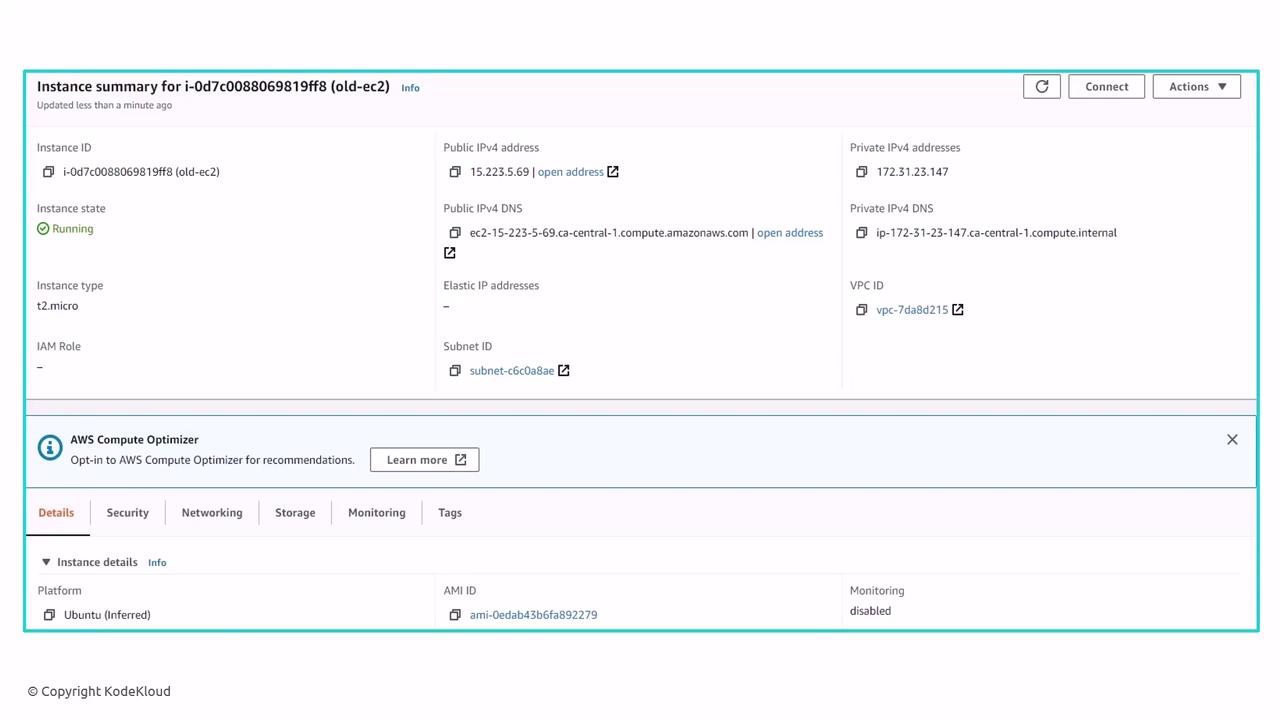OpenTofu: A Beginners Guide to a Terraform Fork Including Migration From Terraform
OpenTofu Import Tainting Resources and Deubugging
Tofu Import
In this lesson, we’ll walk through how to use the OpenTofu import command to bring existing resources—provisioned manually or via tools like Ansible—under OpenTofu management. We’ll use an AWS EC2 instance as our example.
Import Workflow Overview
| Step | Description |
|---|---|
| 1. Define an empty resource block | Create a placeholder in your .tf file. |
| 2. Import into state | Run tofu import with the resource address and ID. |
| 3. Populate the resource block | Fill in all required arguments based on the real resource. |
| 4. Plan and verify | Use tofu plan to ensure no drift exists. |
Prerequisites
Before you begin, gather:
- The instance ID of the EC2 instance (e.g.,
i-02613be10d5326f7). - A working OpenTofu project initialized with
tofu init. - AWS credentials configured in your environment.

Copy the instance ID from the AWS Console; you’ll need it for the import command.
Note
The resource name (webserver-2 in our example) must be unique within your state. Choose a descriptive identifier to avoid collisions.
1. Define an Empty Resource Block
Create a placeholder in your configuration file (e.g., main.tf). The block will remain empty until you import the real attributes.
resource "aws_instance" "webserver-2" {
# Arguments will be populated after import
}
2. Import into the State
Run the tofu import command, specifying:
- The resource address:
<type>.<name> - The real resource ID from AWS.
$ tofu import aws_instance.webserver-2 i-02613be10d5326f7
aws_instance.webserver-2: Importing from ID "i-02613be10d5326f7"...
aws_instance.webserver-2: Import prepared!
Prepared aws_instance for import
aws_instance.webserver-2: Refreshing state... [id=i-02613be10d5326f7]
Import successful!
At this point, the EC2 instance exists in your state file, but the configuration block in main.tf is still empty.
3. Populate the Resource Block
Inspect the AWS Console or view the state file (terraform.tfstate) to retrieve required arguments. Update your configuration with those values:
resource "aws_instance" "webserver-2" {
ami = "ami-0edab43b6fa892279"
instance_type = "t2.micro"
key_name = "ws"
vpc_security_group_ids = ["sg-8064fdee"]
}
4. Plan and Verify
Run a plan to ensure there’s no drift between your configuration and real infrastructure:
$ tofu plan
aws_instance.webserver-2: Refreshing state... [id=i-02613be10d5326f7]
-------------------------------------------------------------------------------
No changes. Your infrastructure matches the configuration.
OpenTofu has compared your real infrastructure against your configuration and found no differences, so no changes are needed.
Your EC2 instance is now managed by OpenTofu. For future changes:
- Modify the
.tffile. - Run
tofu planto preview. - Apply with
tofu apply.
OpenTofu also supports the import block directly in your configuration. During tofu plan, it prepares the import; during tofu apply, it brings the resource into state automatically.
import {
to = aws_instance.example
id = "i-abcd1234"
}
resource "aws_instance" "example" {
name = "my_instance"
# other arguments...
}
After applying, you can remove the import block or leave it as documentation of the resource’s origin.
Links and References
Watch Video
Watch video content